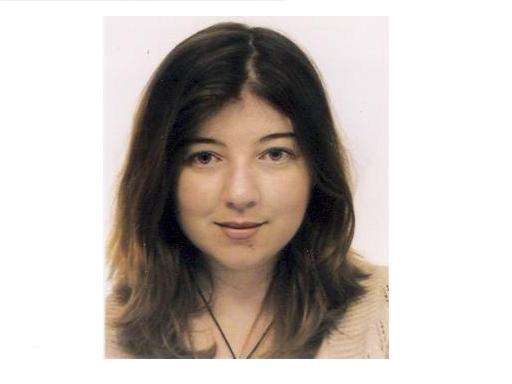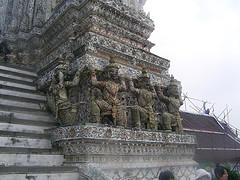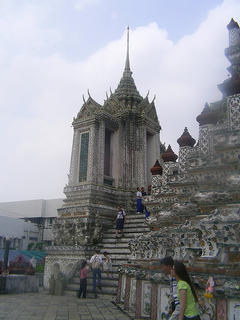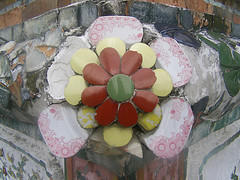Round 2
http://maumuichingu.blogspot.com
Cheers!~
Mischief and Mayhem in East Asia

Steer away from the beaten track and leave a trail for others to follow.
 four smaller siblings was started by Rama II in the early part of the 19th century, and completed by his successor Rama III. The temple in which the prang sits is actually much older. It dates from the Ayuthaya period. During King Taksin's reign, just before the founding of Bangkok, the temple served as his palace.
four smaller siblings was started by Rama II in the early part of the 19th century, and completed by his successor Rama III. The temple in which the prang sits is actually much older. It dates from the Ayuthaya period. During King Taksin's reign, just before the founding of Bangkok, the temple served as his palace. and Thai styles, but also in decoration. Over the brick core, a layer of plaster was applied and then decorated with bits of Chinese porcelain and glazed ceramic tiles. Using porcelain from China isn't as extravagant as it might sound. In the early days of Bangkok, Chinese trading ships calling on the Siamese capital used tons of porcelain as ballast. The temple is just an early example of the Thai approach to "recycling."
and Thai styles, but also in decoration. Over the brick core, a layer of plaster was applied and then decorated with bits of Chinese porcelain and glazed ceramic tiles. Using porcelain from China isn't as extravagant as it might sound. In the early days of Bangkok, Chinese trading ships calling on the Siamese capital used tons of porcelain as ballast. The temple is just an early example of the Thai approach to "recycling."
I could not take photographs inside the shrine, so I only have one of the outside. The Emerald (Jade) Buddha was much smaller than I expected, but it was worth it to see what the hype was about. I find the history behind it more interesting than the statue itself. The following I got from the virtual tour:
The “Emerald Buddha” is carved from a block of jade. It is an object of national veneration and crowds come to pay respect to the memory of the Buddha and His Teachings on certain days of the weeks when it is open to the public.
The Emerald Buddha sits high up on an altar of gold designed to represent the traditional aerial chariot (Busabok, Sk. Pushpaka) attributed to Hindu gods on the murals of this country. The effigy was first discovered in Chiang Rai in 1464, brought down to Lampang where it remained till King Tilok of Lannathai brought it to Chiang Mai, his capital, where it was fitly enshrined. Later on, there occurred a vacancy in the Lannathai line of succesion and King Chaichetta of Luang Prabang, whose mother was a Chiang Mai Princess, was invited to fill it. He however returned to his nativeland in Luang Prabang after a comparatively short rule here, taking the palladium with him back to his capital. Then King Chaichetta moved his capital to a newly built town of Viang Chan taking the Emerald Buddha again with him.
It remained there for a long time till the King of Thonburi sent a punitive expedition under Chao Phraya Chakri to Viang Chan which brought back with it the famous effigy of which the King of Thonburi was very proud. When King Rama I built the city of Bangkok with the Chapel Royal and the Grand Palace, the Emerald Buddha was installed with pomp and ceremony in the chapel.